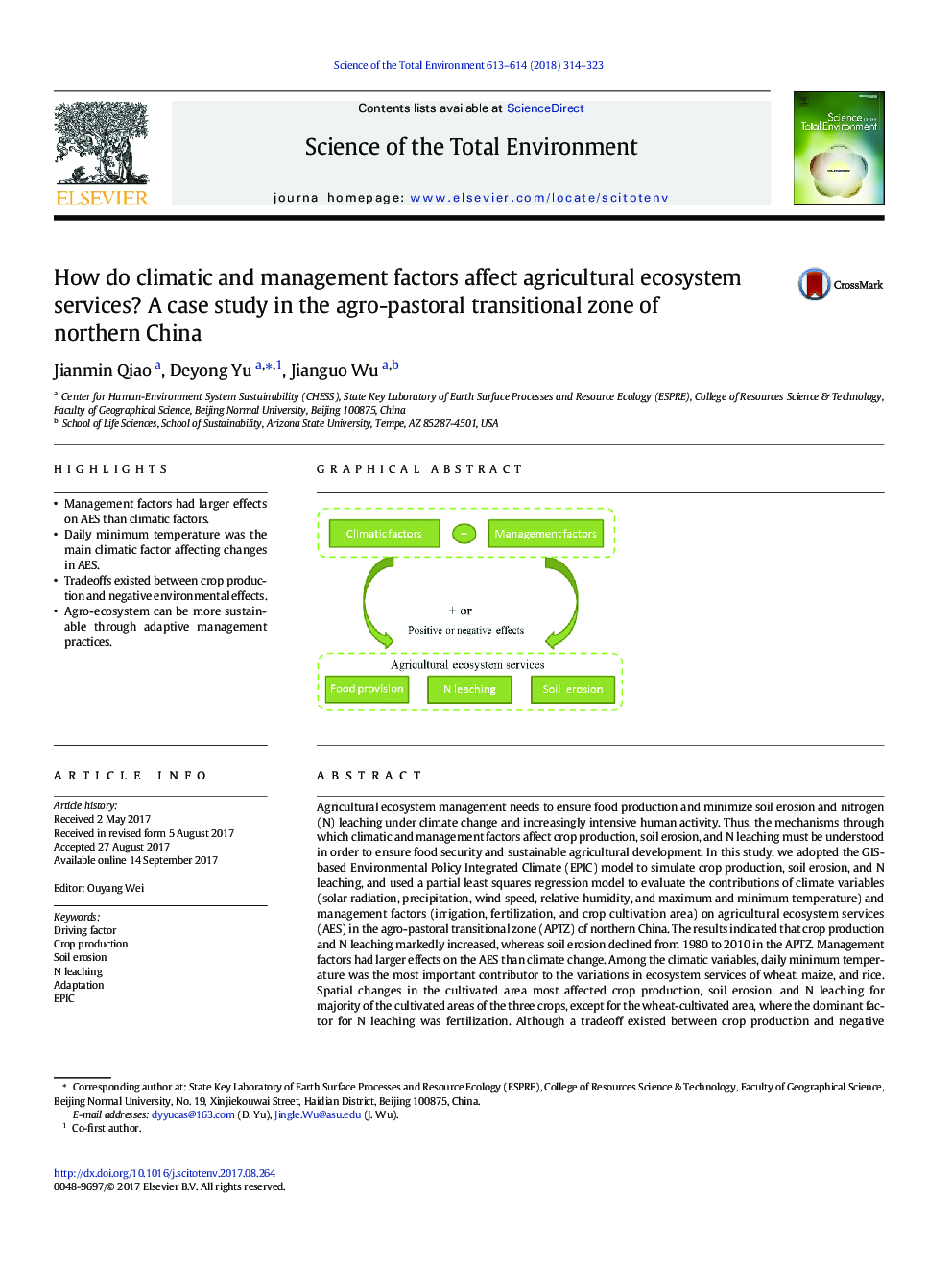| کد مقاله | کد نشریه | سال انتشار | مقاله انگلیسی | نسخه تمام متن |
|---|---|---|---|---|
| 5750092 | 1619690 | 2018 | 10 صفحه PDF | دانلود رایگان |
- Management factors had larger effects on AES than climatic factors.
- Daily minimum temperature was the main climatic factor affecting changes in AES.
- Tradeoffs existed between crop production and negative environmental effects.
- Agro-ecosystem can be more sustainable through adaptive management practices.
Agricultural ecosystem management needs to ensure food production and minimize soil erosion and nitrogen (N) leaching under climate change and increasingly intensive human activity. Thus, the mechanisms through which climatic and management factors affect crop production, soil erosion, and N leaching must be understood in order to ensure food security and sustainable agricultural development. In this study, we adopted the GIS-based Environmental Policy Integrated Climate (EPIC) model to simulate crop production, soil erosion, and N leaching, and used a partial least squares regression model to evaluate the contributions of climate variables (solar radiation, precipitation, wind speed, relative humidity, and maximum and minimum temperature) and management factors (irrigation, fertilization, and crop cultivation area) on agricultural ecosystem services (AES) in the agro-pastoral transitional zone (APTZ) of northern China. The results indicated that crop production and N leaching markedly increased, whereas soil erosion declined from 1980 to 2010 in the APTZ. Management factors had larger effects on the AES than climate change. Among the climatic variables, daily minimum temperature was the most important contributor to the variations in ecosystem services of wheat, maize, and rice. Spatial changes in the cultivated area most affected crop production, soil erosion, and N leaching for majority of the cultivated areas of the three crops, except for the wheat-cultivated area, where the dominant factor for N leaching was fertilization. Although a tradeoff existed between crop production and negative environmental effects, compromises were possible. These findings provide new insights into the effects of climatic and management factors on AES, and have practical implications for improving crop production while minimizing negative environmental impacts.
126
Journal: Science of The Total Environment - Volumes 613â614, 1 February 2018, Pages 314-323
